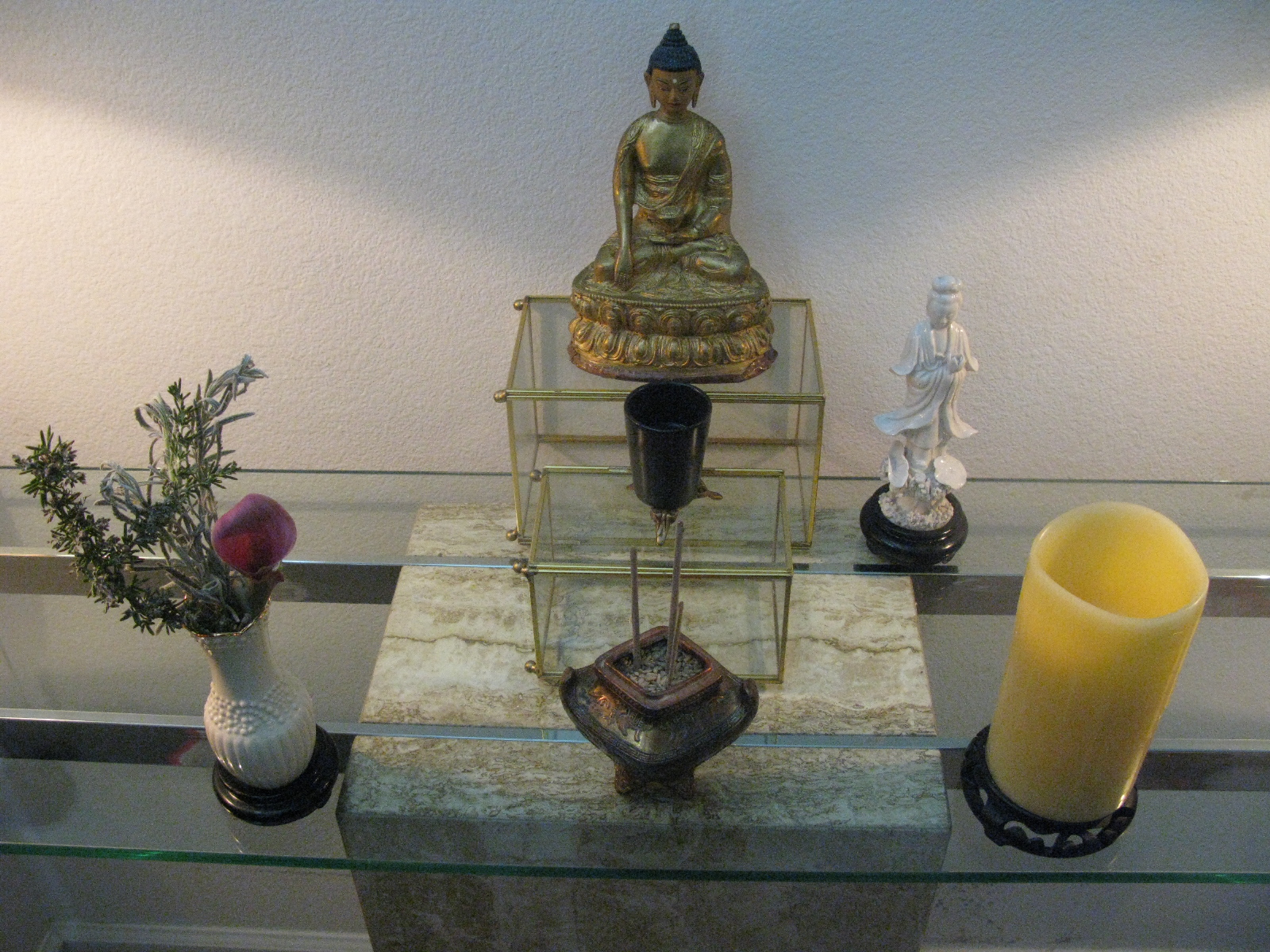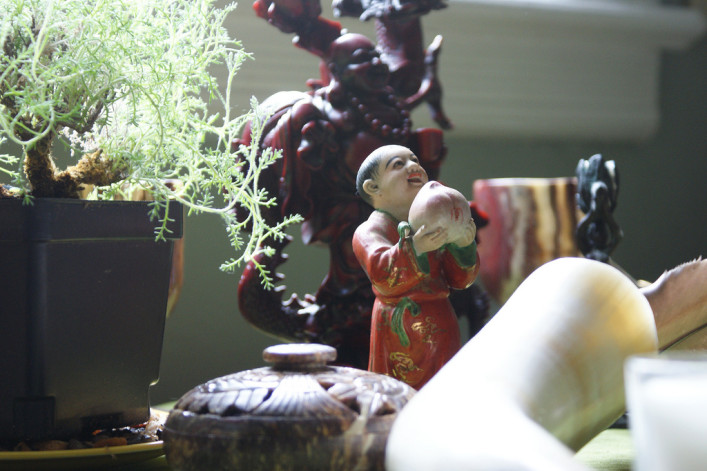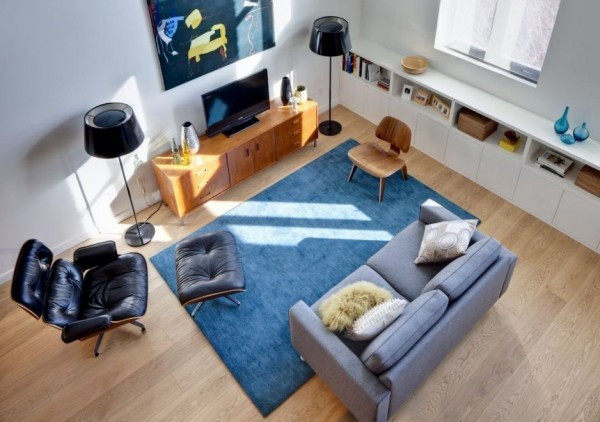How to create a space to meditate in your New York City apartment
New Yorkers are a strange and often contradictory breed. Case in point: they voluntarily live in, and even move to, one of the most densely populated, chaotic places on the planet, and then yearn for some peace and serenity. One way residents try to cope with all the noise—internal and external—is through meditation. Yes, there are places around town to "sit, as the practice is often referred to, typically in groups. These include centers grounded in various Buddhist traditions, such as the Shambala Meditation Center and Kadampa Meditation Center, as well as newer, more secular spaces tapping into the "mindfulness" trend, such as Inscape and MNDFL.
But if you're serious about adopting a meditation practice, or about continuing one already established, the bulk of your meditating is likely going to take place at home, which means you need a place at home to do it. Get this: some people have separate rooms, known as shrine rooms, in their apartments reserved solely for meditating. Clearly, that's not happening for most of us, but that doesn't mean you can't carve out your own little sacred space in your New York shoe closet, or even figure out a way to make your meditation zone mobile. Here are the basics for creating a meditation space in your place.
If you can, find a corner
The ideal scenario is to set up a dedicated space to be used for meditation. It's less important that it be large than that it simply exist.
"It's good to have a dedicated space, especially for people new to meditation. Once you get in it, you know you're in the space for meditation. It helps you get into the zone quicker." says Angie Conte, studio host at Inscape. Having a dedicated space may also help with consistently doing it, which is not a small feat.
"If you know you have a space, it's easier to commit to a practice," Conte says.
A space where you can control as many variables as possible (light, sound) is preferable, and in general you want to keep it clean and uncluttered.
"Clutter and mess where you're practicing makes it more difficult," says Geoffrey Gale, operations and program manager at Shambala New York City. "It's the sense that a clean outer environment helps maintain a clean inner environment."
To dampen distracting noise, Conte recommends some white noise or calming music.
Sit!
Obviously, you'll be sitting in some fashion, but how, exactly, is really up to you, as long as your hips are above your knees. Possible scenarios include using a meditation cushion, a bench, or a chair.
"The most important thing is that you're comfortable," Conte says. "On or off the floor depends on your body. Whatever you can commit to as a ritual and be consistent with."
A cushion can also be helpful for supporting correct, upright posture (slouching is not good form).

Optional: An altar or shrine
If you like, you can set up a small altar, which in the Buddhist tradition often displays gifts and signs of respect such as of bowls of water and a candle, and perhaps an image of the Buddha or a teacher.
"It's not worshipping," says Mark Wilhelmi of Samadhi Cushions, a Vermont retailer of meditation cushions and related goods. "It's for inspiration. The Buddha was a human being, so is the Dali Lama. It's to remind people that other people have worked with their minds to achieve peace and compassion for themselves and others, and they can do it, too."
Engage your senses
Scent is another way to help create a meditative space, sending yet another signal to your brain that it's time to meditate. And it has the bonus of not requiring much actual space at all. Incense is commonly used (often burned on the shrine).
"It creates a more peaceful environment, and has a calming effect," Wilhelmi says.
Conte recommends scented oils, adding that a couple dabs on the wrist or behind the ears can help one cope with, say, a rough subway commute.
"Lavender is commonly used to soothe and calm," she says. "A citrus oil can help wake you up and give you more energy... It's about adding another scent to the process."
Bells and whistles
Additional options include items that create auditory cues, which can be traditional or high-tech. Bowls, also known as gongs, can be struck to clearly delineate the start and end of a meditation session. If you want it exactly demarcated and your kitchen timer feels wrong, more Zen options are available, and of course, there are plenty of meditation apps offering timers, guided meditations and more.
The most important thing to remember when preparing a mediation space is simple: Whatever you do, don't stress about it.
You Might Also Like


























